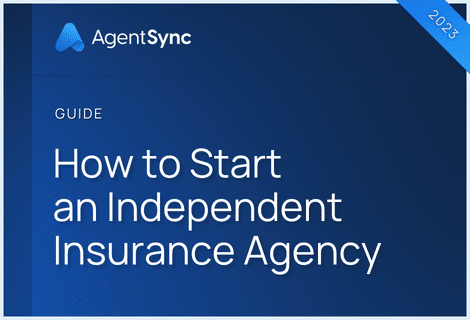

A shift in how risk protection shows up in everyday moments is reshaping customer expectations and redefining insurance distribution as we know it. Offering insurance as an add-on at the same time customers buy a product, like a vehicle, a concert ticket, or a vacation can be an effective way to motivate customers to purchase an insurance policy to protect their purchase, but what do these embedded policies mean for the future of the industry and those who work in it?
What is embedded insurance and how does it work?
Embedded insurance, also known as built-in insurance, is coverage an individual or business can buy alongside a primary purchase. Embedded insurance is typically offered in two ways:
- Opt-in at point of sale: Where a customer is given the choice to add insurance during checkout.
- Already included or “built-in”: Where coverage is built into the cost of the primary product or service.
You’ve probably seen embedded insurance before. Think about the last time you bought an airplane or concert ticket. You were likely asked at some point in the purchasing process if you’d like to insure your ticket purchase for an additional fee. When you opt in to coverage, the ticket-seller’s digital platform leverages APIs to connect to an insurer’s system in real time. From there, the system tailors a policy and binds coverage all within a matter of seconds.
Why embedded insurance is gaining traction
Embedded insurance is by no means new to the industry, but there are a few key factors fueling it’s current rapid adoption.
- The convenience factor: Embedded insurance works because it catches the customer at the time when they’re most concerned with protecting their purchase. It’s kind of like asking “do you want fries with that?” when someone is already ordering a cheeseburger in that it’s a relatively small additional charge that feels like a big benefit. Customers who’re purchasing a product are more likely to buy insurance to protect that product at the time of purchase rather than having to shop for insurance weeks later.
- Technological advancements: Modern platforms support real-time underwriting, dynamic pricing, and streamlined claims processes, making embedded models more operationally viable than they were just a few years ago.
- Regulatory requirements: Regulators are encouraging more simplified, micro-insurance policies for consumers and embedded models fit that bill.
Could embedded insurance be the answer to the widening protection gap?
One area in which embedded insurance could have great impact is its potential to close the global insurance protection gap. The protection gap refers to the gap between the amount of insurance that exists to benefit individuals, households, and businesses and the amount of insurance people and businesses actually purchase.
As catastrophic events like natural disasters and global pandemics have increased, people’s level of insurance protection for such events hasn’t increased proportionately. While embedded insurance won’t singlehandedly solve the protection gap, it can be a useful tool in addressing it, and may even act as a catalyst for wider industry transformation.
For example, some individuals go without the level of home, auto, and even life insurance they need simply because they aren’t thinking about shopping for it. Embedded insurance can simplify the process and increase consumer uptake by offering the type of coverage someone needs at the moment they’re most aware of their need for it. It also eliminates the hassle of shopping around since the policy is already pre-chosen and tailored to their circumstance, which often coincides with a product they’re already purchasing.
The role of agents in the embedded insurance era
At first glance, the rise in embedded insurance might not look so good for insurance agents. If individuals can purchase coverage directly at checkout, what’s the role of insurance producers? The short answer: Insurance agents are still very much relevant for a few reasons:
- Complexity use cases: Embedded insurance is a great option for relatively standard and simple product lines, but for high-value insurance (think commercial coverage or specialty risk) customers will continue to depend on agents and their expertise.
- Advisory opportunity: When customers decline embedded offers, agents can step in to get a fuller picture. This opens up space for relationship building and consultative selling.
- Operational efficiency: Embedded insurance frees producers up from spending all their time on low-margin, transactional policies. Instead, they can focus on building relationships, cross-selling, and managing more complex policies.
In these ways, embedded insurance can complement, rather than displace an agent’s business.
The challenges and risks of embedded insurance
While embedded insurance certainly seems the way of the future, it’s not without a couple key drawbacks. One of the main being that at present, not all kinds of insurance products can be embedded. To make the convenient purchasing process work, embedded insurance products must be relatively low-touch, transparent, and come with a straightforward claims process.
Distributors who want to offer embedded insurance have to find a balance between convenience and compliance. Offering a low-touch purchasing process while also ensuring legal and regulatory requirements like data privacy and security are met is a challenge that won’t be easy when it comes to new and more complex risks.
Looking ahead: The future of embedded insurance
Embedded insurance is no longer niche and it’s lookng like a trend that’s here to stay. Thanks to customer demand and an increase in technological capabilities, embedded insurance is on the up with the global. market value projected to reach over $1.1 trillion in gross written premiums by 2033.
But what’s next for embedded insurance? Here are a few trends we think are worth keeping an eye on:
- Hyper-personalization: As technological advancements make real-time data richer and more readily available, embedded policies will likely become more tailored to the individual.
- Parametric-based models: We expect to see more cases of parametric insurance embedded into digital services, especially when it comes to travel and climate risks.
- Integration maturity: As the embedded trend continues to rise, more businesses will begin to embed insurance into their ecosystems, creating insurance-powered product differentiation.
- Regulatory evolution: State regulators will increasingly support embedded insurance models while holding a microscope to their consumer protections and disclosures.
As the embedded insurance market continues to grow, carriers and MGAs who prioritize API-first platforms, real-time data, and regulatory compliance will be best suited to take advantage of the momentum. Ready to evaluate your current tech stack and explore how to adopt a more modular, API-driven architecture that supports embedded partnerships? Get in touch with an AgentSync representative today.

